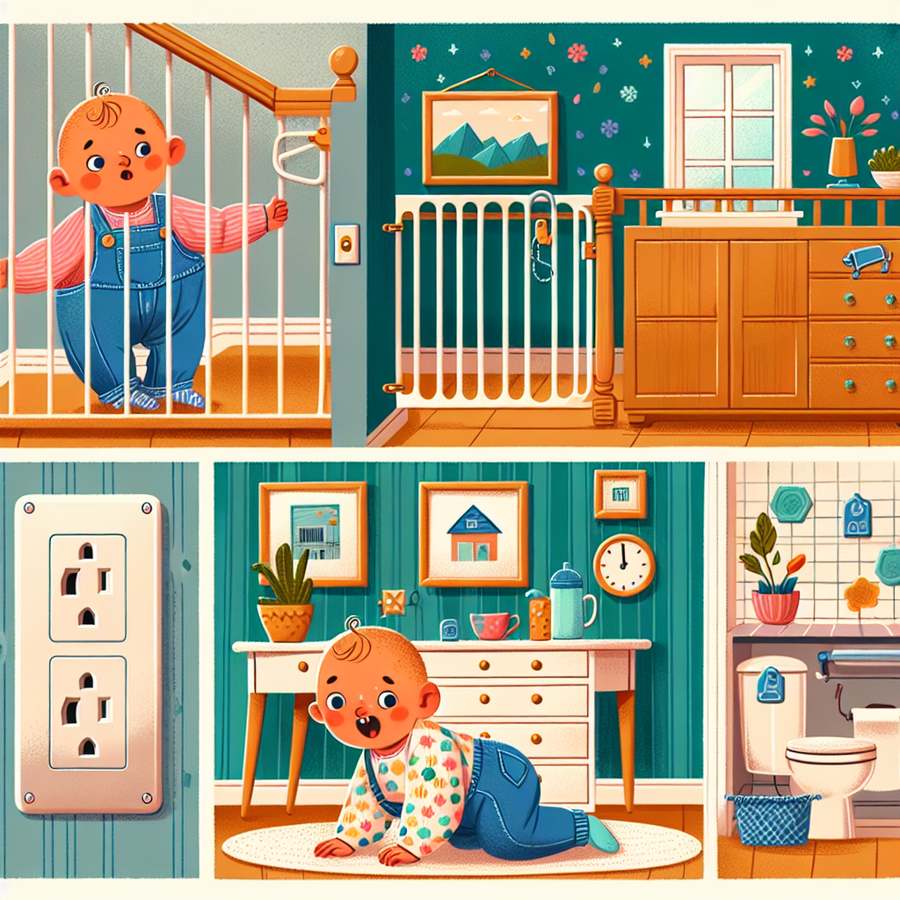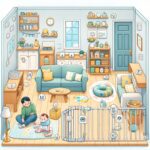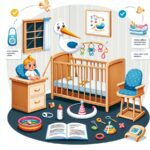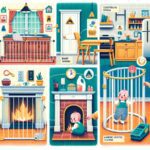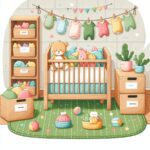Home safety modifications when baby starts crawling become a top priority for parents and guardians. This transformative phase in a baby’s life is filled with excitement and new challenges as they begin to explore their surroundings with newfound mobility. Ensuring your home is safe for your little explorer is essential to prevent accidents and injuries. Let’s delve into the key modifications and precautions you should consider.
Understanding the Importance of Home Safety Modifications
The moment your baby starts crawling marks a significant milestone in their development. However, it also signals the need for parents to reassess their home environment. Floors, corners, and accessible areas that seemed harmless before now pose potential risks to a curious crawler. Home safety modifications when baby starts crawling are not just about adding a few safety gates; it involves a comprehensive assessment of your living space to identify and mitigate risks.
Statistics from the Centers for Disease Control and Prevention highlight the importance of creating a safe home environment for crawling babies. Injuries are the leading cause of death in children ages 1 to 4, and many of these accidents occur at home. This underscores the critical need for home safety modifications when baby starts crawling, turning your attention to common hazards that can easily be overlooked.
Home Safety Modifications When Baby Starts Crawling
Embarking on home safety modifications when baby starts crawling entails a thorough walkthrough of your home to pinpoint potential dangers. Start by getting down to your baby’s level to gain their perspective. This unique vantage point allows you to see hazards that may not be apparent from an adult’s height. From electrical outlets to sharp furniture corners, the goal is to preemptively address these risks with appropriate safety measures.
Securing heavy furniture to the wall is a critical step in home safety modifications when baby starts crawling. Furniture tipping over can cause serious injuries, but these accidents are preventable with furniture anchors. Additionally, installing safety gates at the top and bottom of stairs is non-negotiable. Choose gates that are sturdy and difficult for little hands to open. For comprehensive guidance on baby-proofing your home, consider visiting CPSC’s childproofing recommendations.
Additional Measures for a Safe Crawling Environment
Beyond the basic home safety modifications when baby starts crawling, there are additional precautions you can take to ensure a secure environment. Covering sharp furniture edges with corner protectors can minimize the risk of cuts and bruises. It’s also essential to keep small objects, which pose choking hazards, out of reach. Regularly inspect your home for loose items like coins, buttons, and small toys that a baby could easily swallow.
Creating a designated safe play area is another effective strategy. This space, equipped with baby-friendly toys and soft mats, allows your child to explore freely under your supervision. Remember, home safety modifications when baby starts crawling extend to outdoor areas as well. Ensure your garden or backyard is securely fenced, and remove any poisonous plants that curious little hands might grab. For more insights on creating a non-toxic nursery, you might find this article helpful.
In conclusion, home safety modifications when baby starts crawling are imperative to create a safe exploration environment for your little one. By implementing these modifications and continuously monitoring your home for potential hazards, you can ensure your baby enjoys their newfound mobility without compromising their safety. Remember, a safe baby is a happy baby.
For parents seeking further guidance on child safety, exploring topics such as essential first aid skills, recognizing signs of food allergies in infants, and understanding infant CPR can be incredibly beneficial. Preparing for and preventing emergencies is just as important as making physical modifications to your home.

